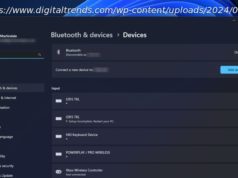Apple’s smart speaker has been pushed back from its anticipated December launch date to early 2018. Here’s what you need to know about HomePod.
Back in the summer Apple announced its intention to begin selling a Siri speaker this December. Unfortunately that date has ow been pushed back to early 2018.
Known as the HomePod, the speaker is a rival to Amazon Echo and Google Home, but allegedly with better audio quality.
Sadly for Apple, as we wait for the HomePod to arrive more and more companies are also announcing their intentions to join the smart speaker market – a market that is already dominated by the Echo with at least 70 percent share, while Google Home holds the rest.
Has Apple left it too late to make a real impact on the smart speaker market?
Apple grandly unveiled the HomePod in June 2017, originally stating that you’d have to wait till December 2017 to get your hands on one.
That date has now been pushed back until early 2018, which means Apple will miss the Christmas buying period.
“We can’t wait for people to experience HomePod… but we need a little more time before it’s ready for our customers. We’ll start shipping in the US, UK and Australia in early 2018,” an Apple spokeswoman told Reuters.
Analysts suggest only 500,000 units will be available at launch, which could lead to supply shortages. Currently being produced by Inventec, Foxconn will take over the process next year – at which point the HomePod should be easier to get hold of.
It’s unclear if the HomePod will go on pre-order before the as-yet-unannounced official release date.
The first countries to get it will be the US, UK and Australia.
$349 in the US, so likely £349 in the UK. That’s more than most expected, but for reasons we will go into shortly.
Bear in mind that if it’s a smart speaker you’re after in general, you can already buy the Amazon Echo for £149.99 or the Google Home for £129. Both excel at voice commanded tasks and music playback.
See also: Amazon Echo review| Google Home review
The HomePod, available in Space Grey or White, is first and foremost a music speaker. Priced similarly to some Sonos speakers, Apple says it has ‘completely reimagined how a speaker should make music in the home’.
When paired with an Apple Music account, the speaker will supposedly deliver adaptable, high quality audio. The bit that makes it a smart speaker is how it’s controlled using Siri, which is built in. The logo glows slightly ominously below the top panel – it’s still unclear if this is a touchscreen or not.
You’ll also be able to set reminders, ask questions and all the things you’d expect from a voice assistant.
What also isn’t clear is if you’ll need an iPhone to use it. You need a phone and app to set up Google Home and Amazon Echo, but then hands free use is possible once you’re all signed in.
You don’t need an iPhone to use Apple Music (it’s also on Android), but Apple restricts hardware like its Apple Watch to Apple-only devices. We hope that you don’t need an iPhone to use HomePod, but you’ll certainly need a phone or tablet with an Apple Music subscription for initial set up and continued use.
Developer Guilherme Rambo has found some code in the latest iOS 11 beta that suggests setup will be possible through audio, without you needing to enter a passcode.
Also see: Samsung could be planning a rival Bixby smart speaker
The HomePod has a 4in, high excursion woofer, six microphones and seven tweeters. What’s a tweeter? It’s a component that allows the HomePod to intelligently monitor the room it’s in and adjust the sound accordingly.
For example when next to a wall, the HomePod won’t blast audio into the wall, but concentrate it into the room. If that room has obstacles, the tweeters will deal with that. They’ll also ensure that even when the music is cranked up, the microphones will still hear you. Clever tweeters.
If you indulge in more than one HomePod, they can pair and act as a team, managing different parts of the audio while monitoring the room.
HomePod is powered by the Apple A8 chip, which is also found in the iPhone 6. This chip will deal with all your audio requests, via Siri. This is where Apple hopes to bring the more familiar smart features in.
Apple said you could ask questions like ‘who is the drummer in this song?’ or ‘play more like this’ and Siri will handle it. Granular questions like the former are hard for digital assistants and we reckon the tight integration with Apple Music data will help HomePod address things like that accurately.
But what about the ‘Home’ in HomePod? Apple chose to preview the speaker at WWDC to give all the developers out there some lead time in bringing HomeKit functionality to the new hardware.
If you have any HomeKit compatible devices like thermostats or lighting, HomePod will hopefully become the hands free hub of your connected home. Ah, the future.
It’s hard to tell yet. With no on-stage demo and very limited hands-on time at the event, we can’t make a call yet. The HomePod will definitely have better audio quality than the Google Home or Amazon Echo, but if Siri isn’t up to the task then it could be infuriating.
Google and Amazon’s products are at their most frustrating when they don’t understand you, and the problems is you can’t control them using your phone. Hopefully Apple’s slower production of the HomePod means it’ll come with the expected Apple excellence right out of the box.






